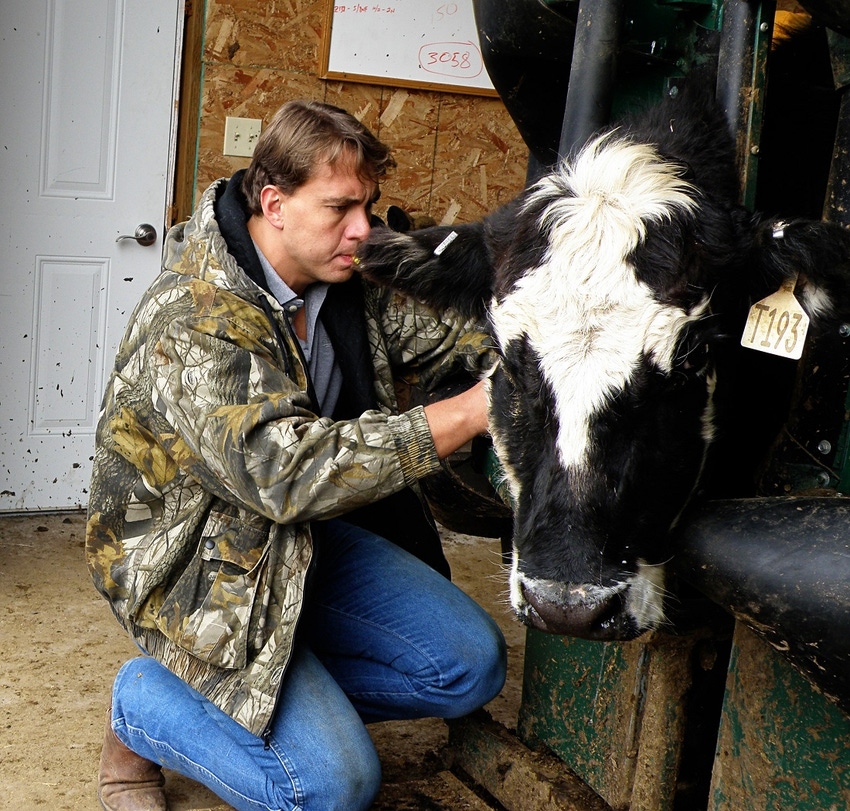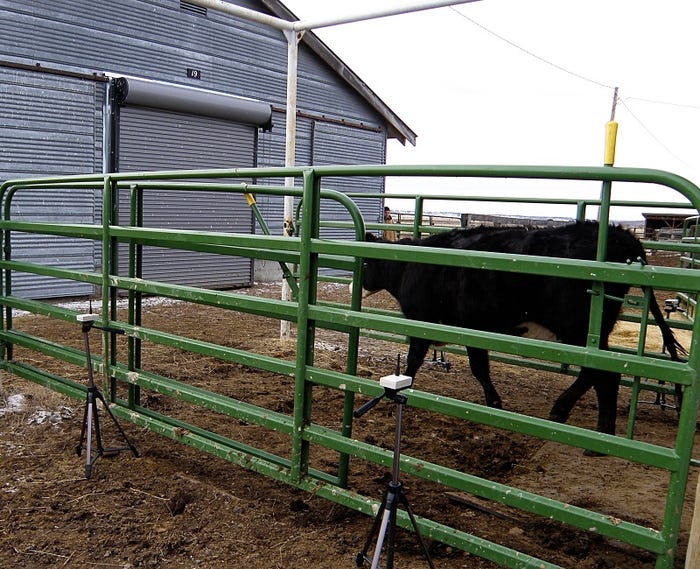Across the world, flighty cattle produce fewer calves.
April 3, 2017

Research keeps proving bad temperament literally costs beef producers money, but could be avoided.
Flighty, aggressive cattle are difficult to handle, don’t gain as well in the feedlot and don’t produce high-quality carcasses. Bad temperament also affects reproduction rates: Cows with bad dispositions have lower conception/calving rates.
Early studies in Florida showed Brahman-cross cattle with excitable temperaments had lower pregnancy rates than their calmer herd mates. Ongoing studies at Oregon State University are looking at effect of temperament on reproductive performance in Angus-Hereford-cross cows.
Reinaldo Cooke, beef extension specialist, and David Bohnert, range animal nutritionist, have done seven studies showing that mature cows with excitable disposition have reduced pregnancy rates.
“Following up on those cows, we found that not only were preg rates less, with AI and bull breeding, but they also lost more pregnancies than the calmer cows,” Cooke says. “These two factors result in a lot more open cows among the excitable group."
“We just completed another study in Brazil. When we did ultrasound after breeding season and compared that with actual calving rate, we discovered that pregnancy loss after conception was higher in cows with excitable disposition, even though we weren’t handling them through the rest of gestation,” Cooke adds.
He says this clearly indicates cows with excitable disposition have something else going on in their physiology that affects their hormonal profile and hinders their ability to maintain the pregnancy and carry it to term.
“We can understand the lower preg rate with AI because we are working with those cows, which creates stress, but with the same effect in cows that are bull-bred and not handled by people, there is something else involved. Those bull-bred cows also have increased pregnancy losses,” Cooke says.
Genetic traits can be linked. Temperament is about 40% heritable, so there is a genetic component. There are also genes for reproductive ability. If cows have genes for excitable temperament perhaps their fertility is affected, as well, he says.
“This is something we want to investigate further," Cooke adds. "Even when you don’t handle them, the cows with excitable disposition have less ability to conceive or carry the pregnancy to term, so there are less calves from cows with excitable disposition than from cows with good disposition.”
Mothering matters, too.
Some ranchers who have to contend with predators feel there’s advantage to wild, aggressive cows, thinking they are better able to protect their calves. Stacy Davies, manager of Roaring Springs Ranch at Frenchglen, Oregon, disagrees.
“I don’t think these traits are correlated at all, and may even be antagonistic,” Davies says. He adds that a wild cow may abandon her calf if she gets upset, or may injure or kill it. She may run over it to attack a person that gets too close.
His crew calves out more than 1,000 heifers and 6,500 cows.
“With any cows that are wild, we pray we don’t have to take them through the barn,” he says. When we turn them out of the barn after they calve, it’s hard to get them to take their baby with them. We end up with some bottle calves because mama is wild and runs off."
“We do a lot of cattle work horseback, holding cattle in a group to sort out pairs. A cow that can control her fear will pick up her calf and stay with it, and be a lot easier to work in a herd situation. The wild cows won’t stay with their calves and it can be challenging to sort them as pairs.”
Any cow that is a good mother will protect her calf from predators. She doesn’t need to have a bad temperament with all its drawbacks. There is a happy medium.
Cooke adds that a recent case study by Temple Grandin at the OX Ranch near Council, Idaho, found that the very placid, tame cows were more likely to come back from the range without a calf than cows with more aggressive disposition.
Grandin’s conclusion was that if you select for too much docility, cows may have a greater pregnancy rate -- more fertile than excitable cows -- but out on the range they may not defend their calves as well as they should.
Cooke adds they have a scoring system for temperament, from 1 (very docile) to 5 (extremely aggressive). It is based on how cattle behave in a chute, how fast they exit the chute, and a few other points.
He says cows with temperament score of 1 to 3 usually have no reproductive loss. But when cows score 3.5 and up they see a drop in calving rate.
"My advice to producers is to select cows that are not too docile or too aggressive," Cooke says. "It’s probably better to have temperament score of about 2 to 2.5 so they are ‘normal’ cows. They react to threats, like they are supposed to, but not so much that they have a bad temperament, with more loss of production.”

In an Oregon study, cameras recorded exit speed of cows leaving the chute to help measure temperament score. The mid-range cows may provide the best of everything.
Wild heifers trainable, cows not?
Another Oregon State University project showed excitable cows may not be trainable toward calmness, but heifers might be.
David Bohnert, range animal nutritionist for Oregon State University, was involved in studies to see if people can use low-stress handling to gentle excitable cattle.
He reports it did not work with cows, but heifers which had no prior frightening experiences with people showed improvement.
“In our heifer study we made random selections so there were calm and flighty animals in each group. One group was brought into corrals regularly; we ran them through a squeeze chute without doing anything to them, just to get them used to the process. At the end of the study, cattle that were used to human handling had lower blood cortisol levels, reached puberty earlier, and had higher pregnancy rates.”
From this, he recommends beef producers have their weaned heifers located where they see people every day.
“When feeding them, walk around amongst them. Even if mama is wild, and a bad influence on her calf, once the heifer is weaned you can start working with the group of weaned heifers without mama around, and make a positive difference,” Bohnert says, adding many of the nervous ones will gentle down.
“There’s a better chance to do this with young replacement heifers; by the time they are cows it’s too late. They already have an attitude you won’t be able to change,” he says. Cattle have good memories, and once they’ve had a bad/scary experience they don’t forget it.
About the Author(s)
You May Also Like



